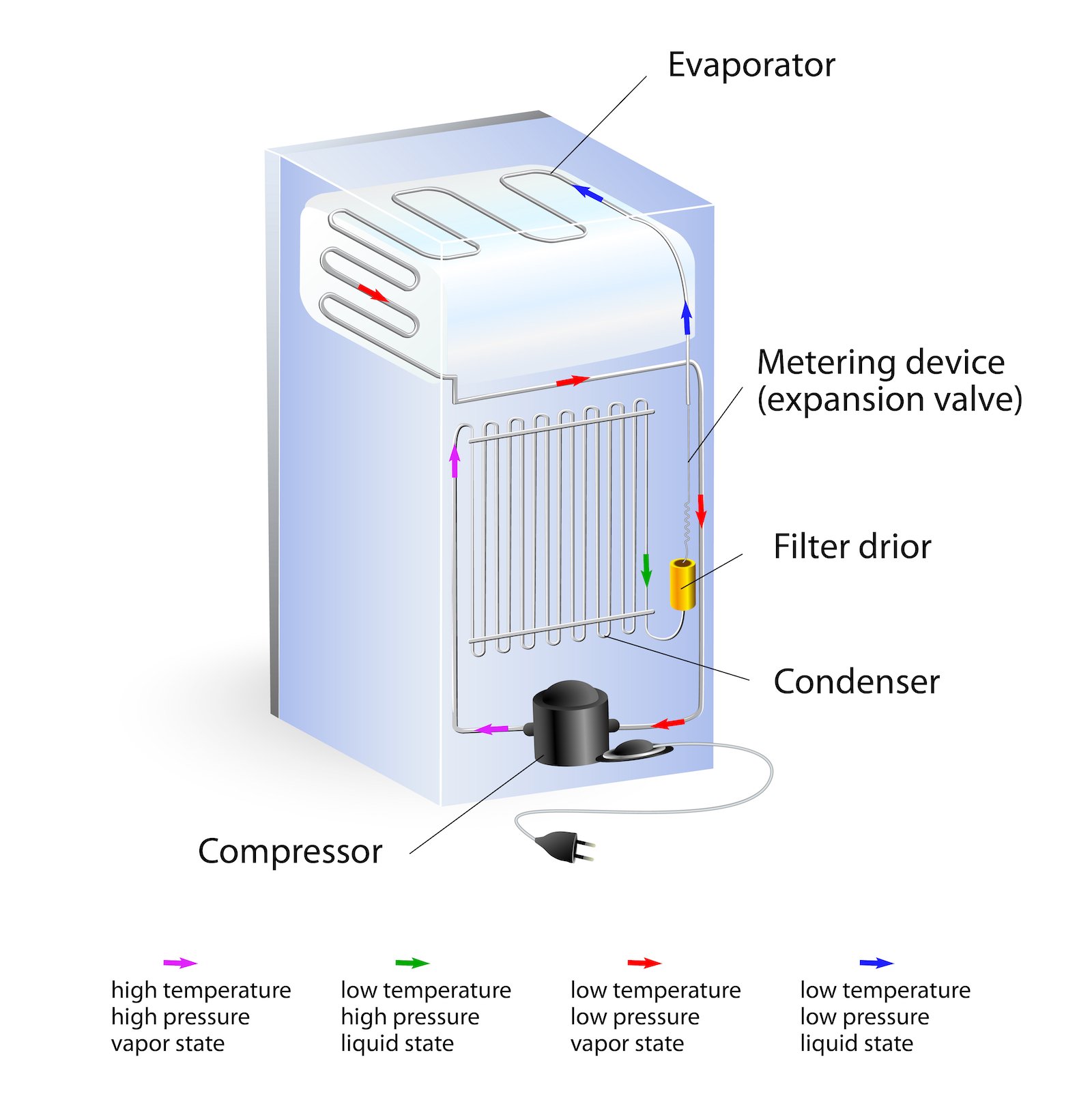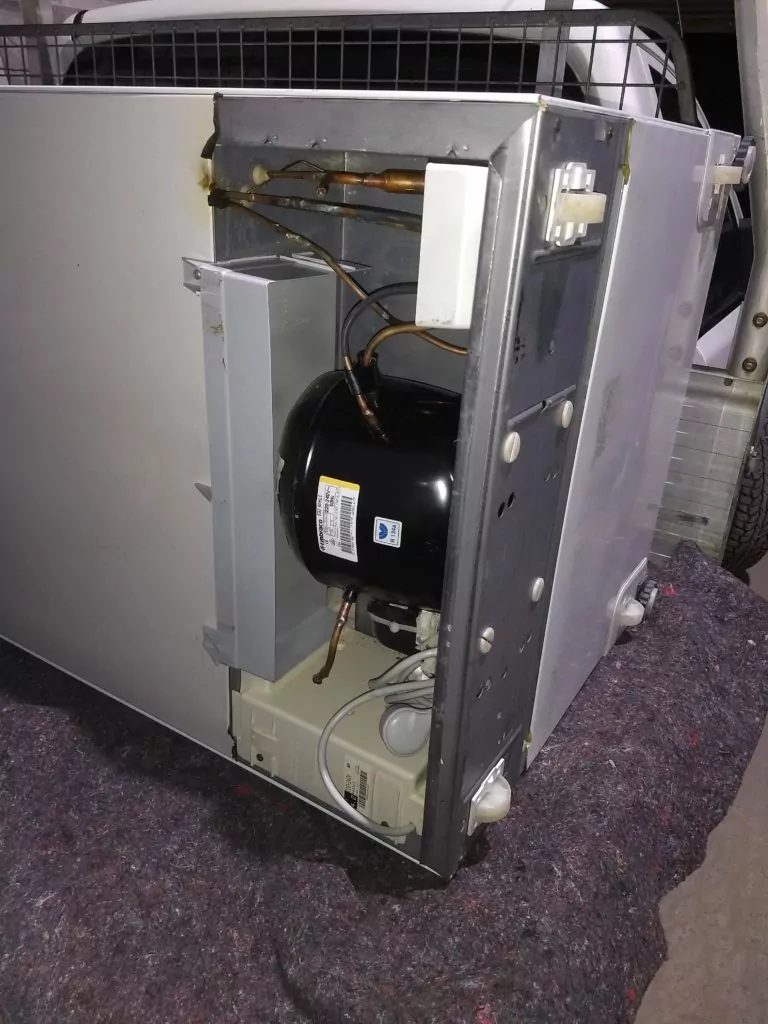Yes, you can transport a freezer on its side, but it’s not recommended. Doing so can damage the compressor and affect its performance.
Moving a freezer requires careful planning to ensure its safe transport. While it may be tempting to lay it on its side for convenience, this can lead to complications. Freezers contain delicate components that can shift or become damaged if not positioned properly.
It’s essential to keep the unit upright as much as possible. If you must lay it down, allow it to stand upright for several hours before plugging it in again. Understanding the right methods for transporting your freezer protects your investment and ensures it operates efficiently in your new location.
Introduction To Freezer Transportation
Transporting a freezer requires careful consideration of its positioning. Placing a freezer on its side can damage its internal parts. Oil and other fluids might leak, causing malfunctions. Correct positioning helps maintain the compressor’s functionality and keeps the freezer working properly.
Many people believe they can transport a freezer any way they like. This is a common misconception. Each freezer is designed to remain upright during transportation. Ignoring this can lead to costly repairs or even a complete loss of the appliance.

Credit: www.youtube.com
The Science Behind Freezer Functioning
Freezers work by using a coolant to absorb heat. This process helps keep food frozen. The coolant changes from liquid to gas and back again. This cycle happens inside the evaporator and compressor. The compressor pushes the gas back into liquid form. This process releases heat outside the freezer.
The coolant is key to the freezer’s function. It moves heat away from the inside. This keeps the temperature low, ensuring food remains safe and fresh. Understanding how this works helps in transporting a freezer. It is important to keep the coolant system intact.
Risks Of Transporting A Freezer On Its Side
Transporting a freezer on its side can cause serious risks. One major concern is damage to the compressor. Compressors are designed to stay upright. Laying them on their side can lead to oil displacement. This may cause the compressor to fail after transport.
Another issue is coolant leakage. Coolants are essential for keeping the freezer cold. If the freezer is on its side, coolant may leak out. This can lead to poor performance or a complete breakdown. Always keep the freezer upright during transport for safety.

Credit: blog.puls.com
Preparing A Freezer For Safe Transportation
Defrosting a freezer is very important before moving. This step prevents water damage. Turn off the freezer a day before transport. Let ice melt completely. Place towels at the bottom to soak up water.
Securing loose components is also essential. Remove shelves and drawers from the freezer. Pack these parts separately to avoid damage. Tape any loose cords to the body of the freezer. This keeps everything safe during transport.
Step-by-step Guide To Moving Your Freezer
Moving a freezer requires careful planning. First, measure the freezer’s size. Make sure it will fit through doors and in the vehicle. Gather all necessary supplies, like blankets and straps.
Use proper lifting techniques to avoid injury. Always bend your knees and keep your back straight. Lift with your legs, not your back. It helps to have a friend assist you.
Securing the freezer in the vehicle is crucial. Use straps to hold it in place. Avoid placing the freezer on its side, as this can damage the compressor. Make sure it stays upright during transport.

Credit: www.whybuy.com.au
What To Do After Transporting Your Freezer
After transporting your freezer, allow it to settle for several hours. This helps the oil in the compressor to return to its proper place. Wait at least 24 hours before plugging it in.
Next, check for damages. Look for dents, scratches, or broken parts. Inspect the door seals and hinges. Ensure the interior is clean and free from any debris. If you find any issues, contact the retailer or manufacturer for help.
Professional Moving Services For Large Appliances
Transporting a freezer can be tricky. Professional moving services can help with large appliances. They know the best ways to handle heavy items. This prevents damage to your freezer and your home.
Consider hiring help if your freezer is very heavy. If you lack proper equipment, moving can be tough. Specialized tools make the job easier and safer. Trained movers have the skills to lift and load appliances correctly.
Finding the right service is important. Look for companies with good reviews. Ask about their experience with large items. Compare prices to ensure you get a fair deal.
Faqs On Freezer Transportation
Transporting a freezer on its side is not recommended. This can damage the compressor and other parts. Always keep the freezer upright during transportation.
After laying a freezer down, wait before plugging it in. A good rule is to wait at least 24 hours. This allows the oil in the compressor to settle back.
Turning it on too soon can cause serious damage. Ensure the freezer is in its upright position before you plug it in.
Conclusion
Transporting a freezer on its side can lead to potential issues, including compressor damage. Always prioritize proper handling methods to ensure your appliance remains functional. If moving it sideways is unavoidable, allow it to sit upright for several hours before plugging it in.
This will help restore the oil flow and protect your investment.
